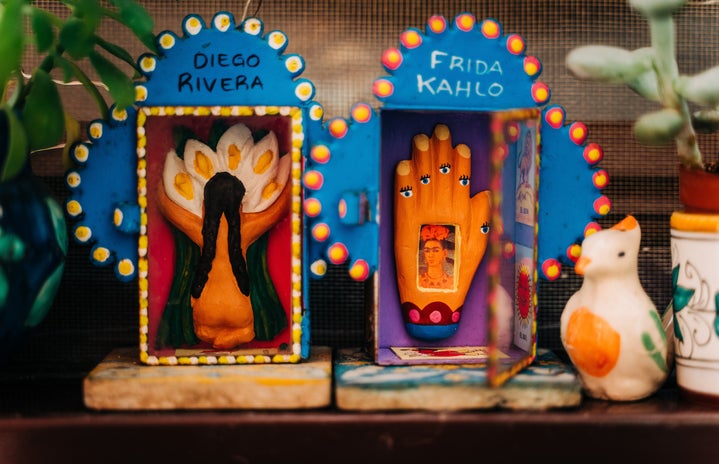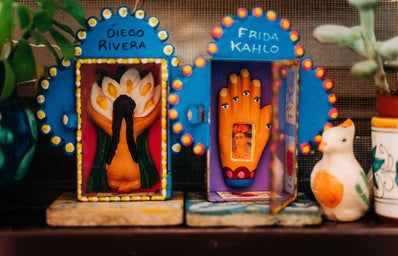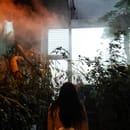Widely hailed as an icon in terms of art, feminism, and Mexican culture, Frida Kahlo is a remarkable figure whose bold, persistent way of life still continues to inspire many. She is instantly recognizable for her close-knit eyebrows and her self-portraits, which are now reproduced in multiple forms of media. Ranging from printed shirts to enameled pins sold online, her images can be found virtually everywhere. In recent times, her lesser-known political values appear more relevant than ever with the advent of late-stage capitalism that is growing more prevalent worldwide.
Until her death in 1954, Kahlo was an avid supporter of Communism. Together with her husband Diego Rivera, she fervently endorsed Communism through protests and her paintings; some of which glorify Communism in an almost religious manner. Although, as demonstrated by past regimes and with recent political upheavals, Communism certainly deserves much scrutiny, Kahlo’s views towards capitalism, however, are critical and still hold ground today. As proved by her lifelong Communist ideals, she held disdain towards capitalism. When Kahlo traveled to the US with her husband in 1930, she was disappointed with American culture. In a letter to her mother, she complained of “the horrible poverty here and the millions of people who have no work, food or home.” Along with poverty, she was also uncomfortable with the wealthy. Her anger at such a gap was noted in a letter to Dr. Eloesser, her most trusted medical adviser and friend to her husband: “high society here turns me off and I feel a bit of rage against all these rich guys here” (from Taschen’s “Frida Kahlo” by Andrea Kettenman).
In a rare collage made in 1933 titled “My Dress Hangs There” or simply “New York,” she illustrates America as a decaying, industrial society. Since the Great Depression took place in the 1930s, the photograph clippings of people in queues at the bottom of the collage are highly likely to be lines waiting for either jobs or food. Here, the wealthy and industrialism preside over the poor who are crowding below towering skyscrapers. The collage eerily reflects the growing gap between the wealthy and the poor in recent times. Economic stagnancy and tough living conditions for millennials have brewed fury towards millionaires and billionaires. Powerful, wealthy figures such as Donald Trump and entrepreneur Jeff Bezos have come to be resented and rightfully criticized for their immense financial status. Business leaders such as Jeff Bezos particularly receive criticism for their poor treatment of workers while they enjoy disproportionate shares of wealth. Following the outbreak of Covid-19, Amnesty Internatonal made a demand to address the employees’ concerns, as his company Amazon has had a history of meager working conditions. Even though decades have passed since the Great Depression, Kahlo’s fury at the exorbitantly rich is felt again by the masses.
Another of her important values was nature – an idea that is reinforced with the majority of her oeuvre. Mexican plants and animals grace her many self-portraits, emphasizing that she herself is part of nature. Keeping in mind her distaste of capitalism and the poverty it breeds, it makes sense that her positive self-portraits feature natural backgrounds. In contrast, works that feature grief often have barren (or industrial) landscapes. While the self-portraits that picture herself as usual – that is, when she is in Mexico and in normal condition – are decorated with plants and animals, the paintings that feature herself in America are cold and lifeless. Perhaps the work that best captures this idea is “Self-Portrait on the Borderline between Mexico and the United States” (1932). In the painting, Kahlo stands between the earthy Mexican side and the drab American side. While flowers bloom on the Mexican side, the American side is dominated by industry and skyscrapers. As if implying that the American dream is a mere deception and fantasy; an American flag is clouded by smoke erupting from factory chimneys.
Her views towards nature and the destructive effects of capitalism are very much relevant today with worsening environmental crises. Incidents such as the bushfires of Australia and the burning of the Amazon Rainforest (which were incited by Brazilian president Jair Bolsonaro, who openly declared to ‘open the Amazon for business‘) are grim reminders that the balance between nature is tipping dangerously. The traditional belief, or American dream of ascending the capitalist stairway to wealth no longer stands true for everyone, but rather a detrimental idea that not only creates unwanted competition among the social classes, and also distracts attention away from environmental woes. In an unfortunate turn of events, Kahlo’s depiction of capitalism as a lifeless, industrial force is becoming vivid than ever in reality.


